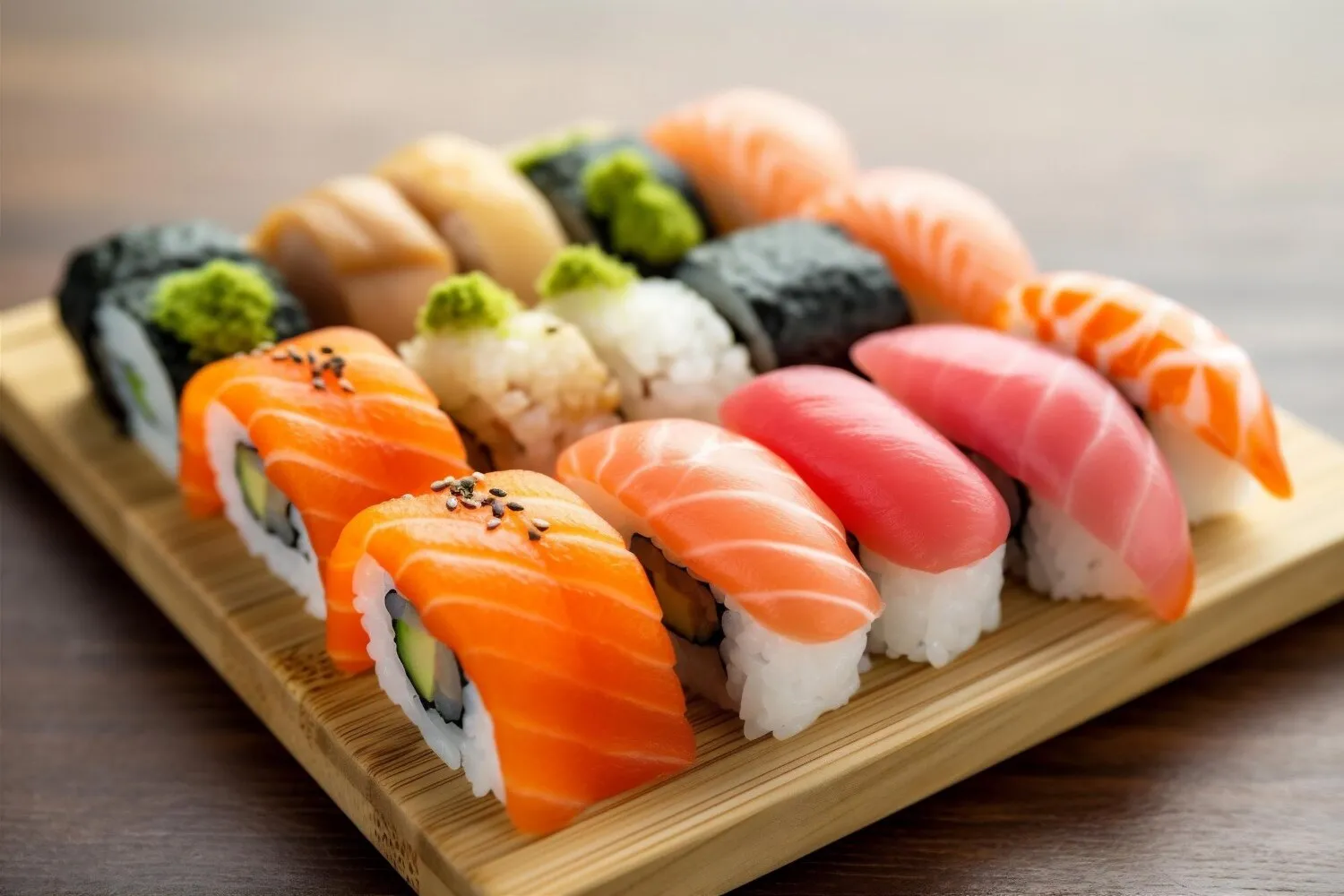
Sushi
Wakuwaku offers a variety of sushi options, including classic rolls, nigiri, and sashimi.
Nutrition Facts
* The % Daily Value (DV) tells you how much a nutrient in a serving of food contributes to a daily diet. 2,000 calories a day is used for general nutrition advice.
Wakuwaku
Sushi's origins can be traced back to Southeast Asia, where fish was preserved in fermented rice. This preservation technique made its way to Japan, evolving over centuries from a method of preserving fish to a distinct culinary art form. Nare-zushi, the earliest form, involved discarding the rice after fermentation, using it only to preserve the fish. Over time, rice vinegar was added to the rice to speed up the fermentation process and improve the taste. Edo-mae sushi, the type most familiar today, developed in Tokyo (formerly Edo) during the 19th century, emphasizing fresh, local seafood served with vinegared rice.
Sushi is deeply ingrained in Japanese culture, representing both culinary artistry and social etiquette.
Sushi Chef Training
Becoming a sushi chef (itamae) requires years of rigorous training. Apprentices learn to prepare rice, handle fish, and master the art of presentation, emphasizing precision, cleanliness, and respect for ingredients.
Sushi Etiquette
Proper sushi etiquette involves using chopsticks correctly, dipping the fish (not the rice) into soy sauce, and eating sushi in one or two bites. Respect for the chef and the ingredients is paramount.
Seasonal Ingredients
Sushi reflects Japan's emphasis on seasonality. Specific types of fish and other ingredients are prized during certain times of the year when they are at their peak flavor and quality.
Sushi offers a balance of umami, sweet, and tangy flavors, complemented by the fresh taste of the seafood.
The core flavor profile comes from the combination of vinegared sushi rice (shari), which has a subtly sweet and acidic taste, and fresh, high-quality seafood. The seafood provides a diverse range of flavors, from the delicate sweetness of white fish to the rich, oily taste of tuna or salmon. Other ingredients like nori (seaweed), wasabi (Japanese horseradish), and soy sauce add further complexity, contributing salty, spicy, and umami notes. Pickled ginger (gari) serves as a palate cleanser between different types of sushi.
Start with Lighter Flavors
Begin your sushi meal with lighter-flavored fish, such as white fish (tai or hirame), and gradually move towards richer, oilier varieties like salmon or tuna. This allows you to appreciate the subtleties of each flavor.
Use Wasabi Sparingly
Wasabi is potent and can easily overpower the delicate flavors of the fish. Use a small amount, either directly on the fish or mixed sparingly into your soy sauce.
Drink Green Tea
Green tea (matcha or sencha) is a traditional accompaniment to sushi. Its clean, slightly bitter taste helps cleanse the palate and complement the flavors of the fish and rice.
Eat Nigiri Upside Down
When eating nigiri, try turning it upside down so that the fish touches your tongue first. This allows you to experience the full flavor of the fish before the rice.
Explore additional Japanese dishes and restaurants
Explore JapaneseDiscover top dining spots and culinary experiences in Wels.
Explore WelsLearn more about the food culture, restaurant scene, and culinary heritage of Austria.
Explore Austria